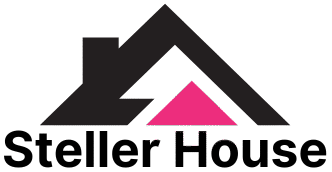In the competitive world of business-to-business marketing, one factor determines long-term success more than any other — consistent, high-quality leads. Every organization, regardless of its size or industry, relies on leads to grow its customer base and increase revenue. That’s why B2B lead generation has become the backbone of modern business strategy.
What Is B2B Lead Generation?
B2B lead generation refers to the process of identifying, attracting, and nurturing potential business clients who are interested in your products or services. Unlike B2C marketing, where the focus is on individual consumers, B2B lead generation targets professionals, decision-makers, and organizations.
The goal is not just to collect contact information, but to engage with the right prospects who are likely to convert into loyal clients. This approach ensures that your marketing and sales teams focus their efforts on valuable opportunities, not random leads.
Why B2B Lead Generation Is Essential
In today’s business landscape, companies can’t rely on traditional cold calls or mass advertisements. Buyers are more informed, selective, and cautious. They expect personalized communication and value-driven offers. This shift has made B2B lead generation an indispensable part of every marketing strategy.
Here are some key reasons it’s so important:
- Improved Sales Efficiency: It ensures your sales team connects only with qualified prospects, saving time and resources.
- Higher Conversion Rates: Targeting interested businesses increases the likelihood of turning leads into paying customers.
- Stronger Brand Visibility: Consistent lead generation builds your brand’s presence in competitive markets.
- Sustainable Growth: A steady flow of leads ensures long-term stability and revenue growth.
Without a proper lead generation strategy, even the most promising business can struggle to maintain consistent sales.
The Process of B2B Lead Generation
Lead generation involves several steps designed to attract, qualify, and convert prospects. These include:
- Research and Targeting: Identifying your ideal customer profile (ICP) — the type of company, industry, and decision-maker that best fits your offering.
- Attraction: Using marketing channels like email campaigns, LinkedIn outreach, SEO, and paid ads to grab attention.
- Engagement: Providing value through content marketing, webinars, or case studies to build trust.
- Conversion: Turning interested leads into paying clients through personalized offers and follow-ups.
A well-structured B2B lead generation strategy combines marketing automation, data analysis, and human interaction for optimal results.
The Role of Data in Lead Generation
Data is at the heart of effective B2B marketing. Without accurate and up-to-date contact information, even the best campaigns will fall flat. Businesses that rely on verified databases, such as professional business email lists, are far more successful at reaching relevant decision-makers.
By leveraging high-quality contact data, you can:
- Identify prospects that match your ideal criteria.
- Personalize communication for better engagement.
- Track campaign performance and adjust strategies accordingly.
Simply put, clean data drives smart decisions — and smart decisions drive conversions.
Best Channels for Generating B2B Leads
Successful companies use a combination of digital channels to generate and nurture leads, such as:
- Email Marketing: Still the most effective B2B channel for personalized outreach.
- LinkedIn Networking: A powerful platform for connecting with professionals and thought leaders.
- Content Marketing: Blogs, whitepapers, and guides establish authority and attract inbound leads.
- Search Engine Optimization (SEO): Ensures your business appears when potential clients search for relevant solutions.
- Webinars and Events: Build credibility and engage directly with your target audience.
Combining these approaches creates a strong, multi-channel strategy that consistently brings in new prospects.
Common Challenges in B2B Lead Generation
While it’s an essential business function, B2B lead generation is not without challenges. Some common issues include:
- Poor data quality and inaccurate contact lists.
- Lack of personalization in outreach.
- Over-reliance on one marketing channel.
- Slow lead follow-ups.
Overcoming these challenges requires using verified data, investing in automation tools, and maintaining strong collaboration between sales and marketing teams.
How to Improve Your Lead Generation Results
To make your campaigns more effective, follow these best practices:
- Focus on Quality Over Quantity: It’s better to have 100 high-quality leads than 1,000 irrelevant ones.
- Use Data-Driven Insights: Track what works and optimize continuously.
- Nurture Leads Consistently: Don’t stop communication after the first contact.
- Offer Value: Provide useful content that helps solve business problems.
Consistency and credibility are what transform leads into loyal customers.
Conclusion
In today’s competitive market, B2B lead generation is the lifeblood of business growth. It bridges the gap between marketing and sales, helping companies build trust, close deals faster, and stay ahead of competitors.
By leveraging verified business data and adopting a strategic, personalized approach, you can ensure a steady flow of high-quality leads. Businesses that prioritize lead generation not only grow faster but also establish stronger, more meaningful connections in the B2B ecosystem.

